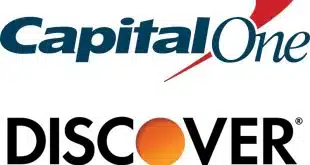The coming of Europay-MasterCard-Visa (EMV) chip cards along with pressures on interchange and surcharge revenues are the top three concerns of U.S. ATM independent sales organizations and other retail deployers, according to survey results from the ATM Industry Association.
The trade group’s annual survey of what’s on its members’ minds found that EMV and its associated chip-and-PIN migration was the leading concern, cited by 61.9% of respondents when asked what were their three “biggest legislative/compliance/network fears, worries or concerns regarding the health of the ATM industry?” Respondents could pick more than one issue. Next came reductions in interchange, cited by 52.1% of respondents; surcharge restrictions, 29.3%; governmental changes/interference “based on lack of information,” according to the survey wording, 27.1%, and the Durbin Amendment, 20.6%.
Bryan Bauer, president of Kahuna ATM Solutions, a Peoria, Ill.-based firm that co-sponsored the survey, isn’t surprised about the attention on EMV given the various network deadlines pending for converting U.S. payments from magnetic stripes to more secure chip cards. For ATM deployers, a big one is coming in October 2016 when a MasterCard Inc. liability shift will place responsibility for fraudulent ATM transactions on the non-EMV capable party.
“It’s very easy for deployers to be concerned immediately with just the expense, the hardware, deploying field-service techs—that’s kind of it initially,” says Bauer. Through channel partners, Kahuna provides processing or support services for 25,000 retail ATMs.
But there are more complex reasons for the anxiety, too, says Bauer, notably the unsettled state of debit card transaction routing in order to meet the requirements of the Durbin Amendment in 2010’s Dodd-Frank Act. Durbin mandates greater network accessibility for card acceptors than is easily implemented on chip cards because Visa Inc. and MasterCard own the EMV technology rights. That has led to what is now a stalemate between those networks and other U.S. debit networks on reaching an agreement about a common application identifier (AID) and related issues that satisfies everyone.
“You drill a little bit deeper and it’s the uncertainty,” says Bauer. “The common AID and routing—there’s a lot of concern about that, that we’ll lose control over any kind of routing choice. That could have impacts on the revenue side.”
Interchange and surcharge revenues are a perennial concern for off-premise ATM deployers who receive interchange from card issuers for each transaction. (Interchange, which is set by the card networks, flows the opposite way for merchants.) According to ATMIA, average interchange income has declined by 35% to 59% since 2004.
Kahuna reports a 35% decline over the past decade, with average interchange income per transaction now approximately 29.5 cents. “Just about every year there seems to be a slight decline,” says Bauer.
Surcharging also is a major revenue source for off-premise ATM deployers and boosting surcharge income is way for deployers to combat declining interchange, but surcharges can be controversial. “Surcharge restrictions themselves are not extremely prevalent right now, it’s just the fear of it,” says Bauer. He adds that the industry has fought past efforts in Congress to put federal limits on surcharges and if needed, “we’ll do it again.”
When asked how they planned to grow their business, 20.3% of deployers said they planned to buy additional ATM portfolios and 12.5% said “they were planning to align with another business to increase efficiency,” says an ATMIA release. Many deployers also offer other products besides straight ATM transaction support, the top ones being credit card processing, advertising and branding packages, professional support and managed services, surcharge-free network access, and deposit automation.
ATMIA is an international association with U.S. headquarters in Sioux Falls, S.D. Ninety-two deployers responded to the survey, which was conducted in December and January.





